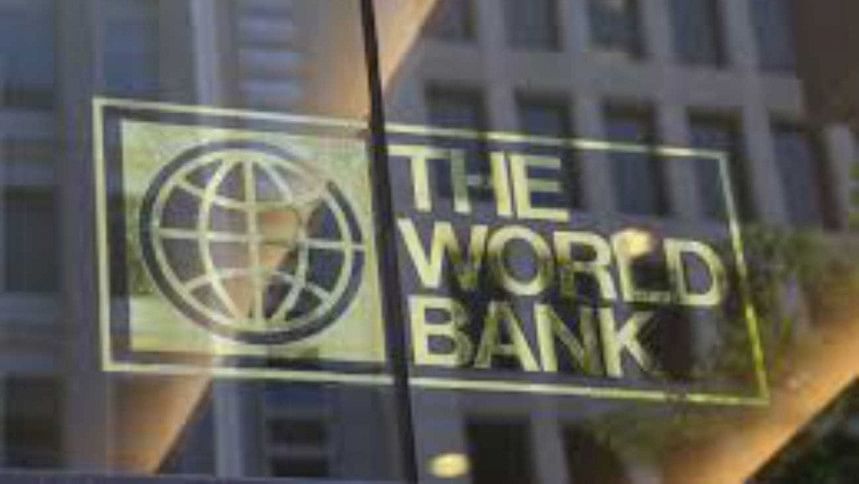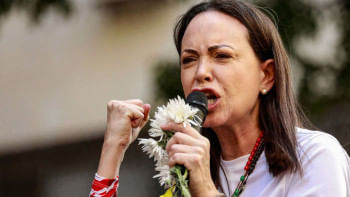Growth outlook brightens, but risks persist: WB

Bangladesh's economy is showing signs of recovery after months of political uncertainty, with the World Bank forecasting growth to rise to 4.8 percent in the current fiscal year from 4 percent a year earlier, as inflation moderates and private consumption begins to strengthen.
However, the Washington-based lender warned of downside risks to the near-term economic outlook, including continued political transition risks, banking sector woes and international trade disruptions.
"Further weakening of the banking sector and heightened political instability surrounding the election -- potentially persisting into the post-election period -- could depress investment more than anticipated," the World Bank said in its Bangladesh Development Update released yesterday.
The report said the interim administration faces limited fiscal space and institutional capacity to advance reforms agreed under the International Monetary Fund-supported programme.
Despite these challenges, however, Bangladesh's GDP growth remained resilient in FY25, supported by strong remittance inflows and steady garment exports. Industrial output recovered modestly in the second half of the year, while construction and investment activity remained subdued.
"The economy has shown resilience, but this cannot be taken for granted," said Jean Pesme, World Bank Division director for Bangladesh and Bhutan.
Inflation averaged 10 percent during FY25 but has begun to ease as monetary policy tightened and the taka stabilised after months of volatility. The local currency depreciated by 8.7 percent over the year, boosting exports but keeping import costs high. The World Bank expects inflation to moderate to 5.5 percent by FY27, assuming global commodity prices remain contained.
LABOUR MARKET WEAKNESS, POVERTY
The report highlighted a marked deterioration in labour market conditions. The labour force participation rate fell from 60.9 percent to 58.9 percent between 2023 and 2024, driven by a sharp decline in female participation -- down 3.1 percentage points to 38.4 percent.
That decline meant 30 lakh more working-age people were outside the labour force, of whom 24 lakh were women. Total employment dropped during that period by almost 20 lakh to 6.91 crore.
All major sectors lost jobs, with services hardest hit (–3.6 percent), followed by agriculture (–2.1 percent) and industry (–2 percent). Unemployment rose only marginally to 3.7 percent, as many discouraged workers simply stopped looking for work. The World Bank warned that this trend "masks deeper labour market distress," especially among youth and women.
The national poverty rate is estimated to have climbed to 21.2 percent in FY25 from 20.5 percent in FY24, "reflecting the combined impact of slower growth, high inflation, and deteriorating labour market conditions", according to the report. It forecast that poverty would ease to 19.1 percent by FY26, though that would still be higher than the 18.7 percent recorded in FY22.
Persistently high inflation eroded purchasing power across households, but the impact was sharpest for low-paid workers, whose real wages fell by almost 2 percent in FY25, the report said.
"Poverty at the $3 line is projected to rise to 8.9 percent, pushing about 12 lakh more people into poverty."
Inequality, however, is expected to narrow slightly as income pressures were felt broadly across the distribution. Migration and remittances provided an important cushion: with more than one million people leaving annually, remittance-receiving households remained relatively more resilient.
Bangladesh registered its first current account surplus in eight years -- $149 million in FY25, supported by robust remittances, which rose by 26.8 percent, and an 8.8 percent increase in exports led by the garment sector.
However, fiscal pressures intensified. The budget deficit widened to 4.7 percent of GDP, as revenue collection weakened to 6.8 percent of GDP, among the lowest in Asia. Rising subsidies and debt servicing costs strained public finances, with public debt climbing to 38 percent of GDP.
The World Bank warned that delayed reforms in tax policy and energy pricing -- both part of the IMF programme -- risked undermining debt sustainability and investor confidence.
Bangladesh's banking sector is still under severe strain, the report said, with non-performing loans reaching 24.1 percent by March 2025 -- the highest in South Asia. The system-wide capital adequacy ratio fell to 6.3 percent, well below the regulatory minimum.
Investor sentiment, it said, remains cautious. However, the World Bank expects the pace of reforms to pick up following the election, provided stability is restored and policy continuity ensured.
"With the conclusion of the national election in FY26 and the resulting dissipation of political uncertainty, growth is projected to gain momentum from FY27 onward," it said.
LDC GRADUATION
Regarding the forthcoming graduation from Least Developed Country (LDC) status in November 2026, the report said it may not adversely affect export performance immediately due to the continuation of preferential tariff rates until 2029 for the European Union, Bangladesh's largest export market.
LDC graduation would be an opportunity to carry out comprehensive reforms to expand trade, strengthen private sector competitiveness, and promote economic diversification.
Policy clarity and accelerated reforms following the election could support a faster-than-expected growth rebound, job creation, and poverty reduction, it added.
Bangladesh is among South Asian countries that rank among the least open to international trade and finance. The region's high tariffs protect sectors where employment opportunities are shrinking.
On the other hand, sectors with lower tariffs, such as services, have accounted for three-quarters of employment growth during the past decade. Carefully sequenced tariff reductions, especially in the context of broader free trade agreements, could help boost private investment, increase competitiveness, and generate significant employment opportunities.
"South Asia has enormous economic potential and is still the fastest-growing region in the world. But countries need to proactively address risks to growth," said Johannes Zutt, World Bank vice president for South Asia.
"Countries can boost productivity, spur private investment, and create jobs for the region's rapidly expanding workforce by maximising the benefits of AI and lowering trade barriers, especially for intermediate goods," he added.

 For all latest news, follow The Daily Star's Google News channel.
For all latest news, follow The Daily Star's Google News channel. 



Comments